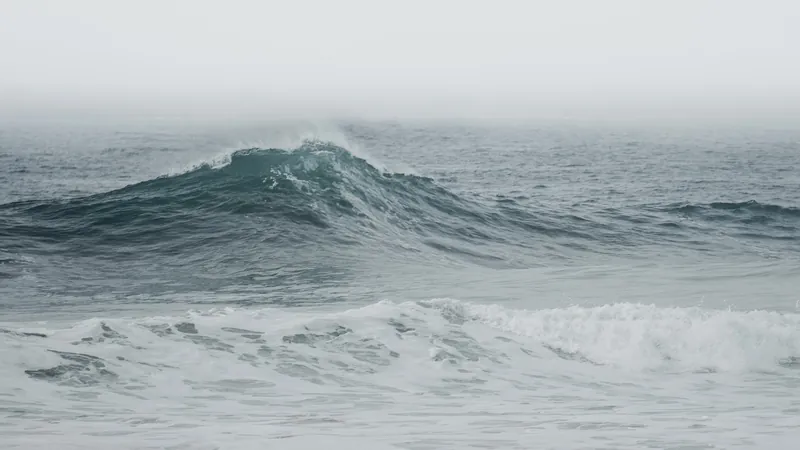
Unveiling the Mystery of Rogue Waves: Not Just Maritime Myths!
2025-08-12
Author: Daniel
Rogue Waves: The Giants of the Ocean
Rogue waves, towering behemoths of the ocean, have long fascinated sailors and scientists alike. These colossal waves can surge to staggering heights of 65 feet (20 meters) or more, often dwarfing surrounding waves. Once thought to be mere legends, rogue waves have been observed globally and are known to pose serious hazards to vessels and offshore installations.
A Groundbreaking Study in the North Sea
To unravel the secrets of these magnificent monsters, an international team of researchers conducted an extensive study, recently published in *Nature Scientific Reports*. Their research is based on 18 years of high-frequency laser measurements from the Ekofisk oil platform located in the central North Sea, providing the most thorough dataset ever collected on rogue waves.
18 Years of Data Dissected: The Real Cause of Rogue Waves
By analyzing nearly 27,500 wave records from 2003 to 2020, the researchers discovered something astonishing. Contrary to being mere freak occurrences, rogue waves emerge through predictable natural processes. These findings challenge long-held beliefs; rogue waves are less about myth and more about science.
Understanding Wave Formation: It's Not So Complicated!
Traditionally, wind-driven waves are formed through the gentle caress of the breeze on the ocean's surface. But when considering rogue waves, researchers honed in on why some waves suddenly shoot up into towering giants. One theory—modulational instability—suggested a mathematical underpinning, but real-world data from the North Sea paint a different picture.
Chaos or Order? The Role of Constructive Interference
Instead of chaotic randomness, the team identified that rogue waves are more likely generated through a process known as constructive interference. This occurs when multiple smaller waves synchronize and combine, thereby creating one massive wave. The natural asymmetry of waves—steeper crests and gentler troughs—amplifies this effect. In less than a minute, rogue waves can transform a serene sea into a chaotic battleground.
The Science Behind the Magic: Recognizing Patterns in the Chaos
The research revealed that rogue waves follow a quasi-deterministic pattern, a blend of predictability infused with random chaos. Although rogue waves may seem unpredictable, they adhere to recognizable patterns that can eventually help in predicting their occurrence.
Real-World Applications: Navigating Safer Seas
Understanding the formation mechanics of rogue waves is crucial. With insights gleaned from this study, engineers can now design safer ships and offshore structures, while also improving risk prediction methodologies. As storms rage and waves collide, this new knowledge equips humanity to navigate the unpredictable seas with confidence.
A Recent Case: A 55-Foot Wave Exemplifies the Theory
A vivid illustration of this research came on November 24, 2023, when a formidable storm swept through the North Sea, giving rise to a spectacular rogue wave measuring 55 feet (17 meters). The analysis confirmed that this wave was the product of smaller waves stacking together in alignment—just as the theories suggested.
In conclusion, rogue waves are no longer mere maritime folklore but scientific phenomena rooted in predictable wave dynamics, giving us better tools to face the challenges of oceanic life.



 Brasil (PT)
Brasil (PT)
 Canada (EN)
Canada (EN)
 Chile (ES)
Chile (ES)
 Česko (CS)
Česko (CS)
 대한민국 (KO)
대한민국 (KO)
 España (ES)
España (ES)
 France (FR)
France (FR)
 Hong Kong (EN)
Hong Kong (EN)
 Italia (IT)
Italia (IT)
 日本 (JA)
日本 (JA)
 Magyarország (HU)
Magyarország (HU)
 Norge (NO)
Norge (NO)
 Polska (PL)
Polska (PL)
 Schweiz (DE)
Schweiz (DE)
 Singapore (EN)
Singapore (EN)
 Sverige (SV)
Sverige (SV)
 Suomi (FI)
Suomi (FI)
 Türkiye (TR)
Türkiye (TR)
 الإمارات العربية المتحدة (AR)
الإمارات العربية المتحدة (AR)